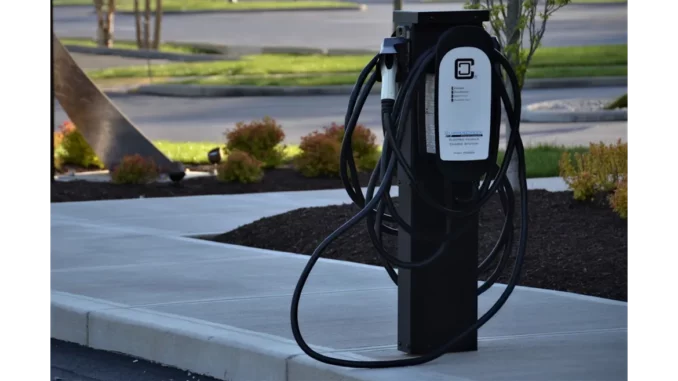
Summary
Li-ion Batteries See Material Evolution Amid Rising EV Demand
The lithium-ion battery industry is undergoing a significant transformation driven by surging demand for electric vehicles and the necessity for efficient stationary energy storage solutions. As the global shift towards renewable energy gains momentum, the materials used in lithium-ion batteries are evolving to meet new performance and cost demands. This analysis explores key material trends reshaping the market, specifically highlighting the emergence of lithium iron phosphate (LFP) and the evolving dynamics of graphite materials.
Main Article
The Rise of LFP Batteries
In the context of electric vehicles (EVs) transitioning from niche to mass-market appeal, the focus on affordability is intensifying. Lithium iron phosphate (LFP) batteries have surfaced as a cost-effective alternative to conventional nickel-manganese-cobalt (NMC) and nickel-cobalt-aluminium (NCA) chemistries. With their reduced cost, LFP batteries have become an attractive option for automakers like Hyundai, Volkswagen, Renault, Stellantis, and Ford, who are keen on producing more economically viable electric models. Following China’s pioneering re-adoption of LFP cathodes for EVs, this trend is now gaining traction in Europe and the United States, as well as in the stationary energy storage sector where cost and reliability are critical.
LFP’s market share has been on a steady incline, primarily due to its cost benefits and thermal stability. Despite this, the dominance of Chinese manufacturers in LFP production raises concerns about supply chain security and geopolitical risks, particularly for U.S.-based manufacturers. James Li, an analyst at EV Insight, notes, “The reliance on Chinese LFP production poses a strategic challenge for Western automakers who are aiming to secure their supply chains.”
Overcoming LFP’s Energy Density Challenges
While LFP offers notable advantages, its lower energy density compared to NMC or NCA chemistries limits EV range. To mitigate this, lithium manganese iron phosphate (LMFP) is being developed. By incorporating manganese into the cathode composition, LMFP enhances energy density while maintaining LFP’s cost advantages. Companies such as Dynanonic and Ronbay are ramping up LMFP production, aiming to close the performance gap between LFP and more traditional NMC-based batteries.
Graphite Material Dynamics
In the anode sector, a significant shift is underway from natural to artificial graphite. Historically more costly due to energy-intensive production processes, artificial graphite is gaining market share as costs decline. By 2023, artificial graphite represented approximately 73% of the lithium-ion battery graphite anode market, up from 60% in 2020. This price reduction, driven by low energy costs in China and heightened competition, has made artificial graphite increasingly appealing to battery manufacturers.
The surge in artificial graphite’s popularity is creating barriers for alternative anode materials, such as silicon-based compounds, which remain prohibitively expensive. This shift underscores the industry’s focus on cost optimisation, mirroring the trends observed in cathode material choices. Daniel Cheng, a senior materials consultant, remarks, “The push towards lower-cost materials is essential for the industry, but it also sets a high bar for emerging technologies.”
Cost-Driven Trends
The overarching theme in both anode and cathode material trends is cost. The adoption of LFP and the development of LMFP highlight the industry’s focus on affordability. Similarly, the transition towards artificial graphite is propelled by decreasing prices. While this focus on cost is advantageous for consumers and battery purchasers, it presents challenges for new market entrants, especially in regions like Europe and North America, where supply chains are less developed compared to Asia.
Detailed Analysis
The ongoing evolution in lithium-ion battery materials is emblematic of broader economic and geopolitical trends. As the world moves towards decarbonisation, the demand for cost-effective, high-performance energy storage solutions is intensifying. The shift from NMC to LFP and the development of LMFP underscore this trend, reflecting a strategic pivot towards materials that offer a balance between performance and cost.
The geopolitical implications of China’s dominance in LFP production cannot be overlooked, as Western manufacturers grapple with supply chain vulnerabilities. The growing preference for artificial graphite further illustrates the industry’s emphasis on cost reduction, aligning with global efforts to make EVs more accessible to the mass market.
Further Development
As the lithium-ion battery industry continues to innovate, the successful integration of new materials and technologies will be pivotal. Companies are likely to invest heavily in research and development to enhance the performance, safety, and environmental benefits of these materials. This focus will be crucial in supporting the global transition to cleaner energy sources and the decarbonisation of transportation and energy systems.
Stay connected with our ongoing coverage as we delve deeper into emerging trends and potential breakthroughs in battery technology. Further developments in the materials sector will undoubtedly shape the future landscape of the industry, influencing both market dynamics and consumer choices.

